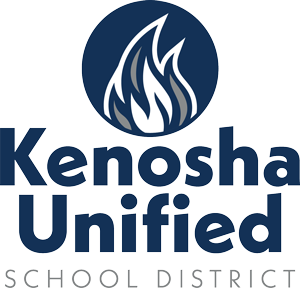Policy 3531.1 – Copyrighted Materials
The district recognizes and respects intellectual property rights. Therefore, the district shall require all employees and students to comply with copyright laws.
Members of the learning community who choose to use copyrighted materials are individually responsible for making a good faith determination as to whether the use falls within the “fair use” exemption. When necessary, users shall obtain written permission of copyright owners for the use of their work.
Violation of this policy may result in disciplinary action. In addition, employees and students who violate copyright laws will be held individually responsible for infringement and may be subject to civil penalties and/or criminal sanctions.
The district will not be responsible for any copyright infringement or other costs incurred by the responsible individual.
LEGAL REFERENCE:
- Wisconsin Statutes Section 943.70 (Computer crimes)
- Federal Copyright Act (Title 17 of the U.S. Code federal copyright provisions, including “fair use”)
- Technology, Education, and Copyright Harmonization Act (TEACH Act copyright provisions related to transmissions of performances and displays of copyrighted materials)
- Digital Millennium Copyright Act (Distance education copyright provisions)
CROSS REFERENCE:
- 3811 Use of District-Owned Technology Equipment by Employees Off District Premises
- 6600 Instructional Resources
- 6610 Selection of Instructional Materials
- 6620 Library Resources
- 6633 Use of Internet System
ADMINISTRATIVE REGULATIONS: None
AFFIRMED: November 22, 2005
REVISED:
- December 18, 2007
- February 24, 2015
Rule 3531.1 – Copyrighted Materials
- The district is committed to complying with all laws pertaining to copyright. In addition to maintaining exclusive rights to creators of protected works, the federal Copyright Act also creates exceptions to those rights. “Fair use” and educational and library uses are permitted when specific criteria are met.
- Section 107 of the Copyright Act explains that the “fair use” of copyrighted work is not an infringement of copyright. There are four factors involved in determining whether the use can be considered “fair use,” and all four factors must be considered in order to determine the “fair use.”
The four factors are:- The purpose and character of the use, including whether such use is of a commercial nature or is for nonprofit educational purposes;
- The nature of the copyrighted work;
- The amount and substantiality of the portion used in relation to the copyrighted work as a whole; and
- The effect of the use upon the potential market for or value of the work.
- The district regards academic honesty as vital to the academic, social, and emotional development of all students. Academic honesty requires that all academic work is the legitimate, truthful effort, and product of the student. Plagiarism in any form is not permitted, which is taking someone else’s work (idea, image, writing, or multimedia) without giving credit to the source of the work.
- The use of certain copyrighted materials in distance education courses is permitted according to the Technology, Education and Copyright Harmonization (TEACH) Act. It is not copyright infringement for faculty and students of accredited nonprofit education institutions to transmit performances or display copyrighted works as part of a course.
- Under certain conditions, school libraries may reproduce copyrighted works. Photocopies made for library use are not to be used for any purpose other than private study, scholarship, or research.
- Computer operating systems, software, and cloud computing services are copyright protected and are governed by individual software license agreements that define the conditions of use and restrict the number of copies that may be retained and/or used at a given time. The use of cloud computing services and software on individual devices or servers must be in compliance with the license agreements. The person assigned to the device is responsible to make certain that no unauthorized software is loaded on the device, and only authorized cloud computing services are used.
- “Fair use” guidelines apply to student or teacher created multimedia projects incorporating copyrighted works. “Fair use” ends when the multimedia project creator (educator or student) releases the project for general use, such as when others access it over the Internet or on a non-closed circuit distribution system. If broader dissemination occurs, the creator must then obtain permissions for all copyrighted portion and must include on the opening screen of the program that their presentation has been prepared under the “fair use” exemption of the U.S. Copyright Law and is restricted from further use.
- Copyrighted material may not be hosted on any district website or used as an attachment or link without permission from the creator. Reproduction or use of copyrighted materials is acceptable either with the written permission of the copyright holder or within the bounds of the “fair use” guidelines provided in the copyright law.
- Web-based material is copyrighted just as print and multimedia materials are, and “fair use” guidelines apply.
